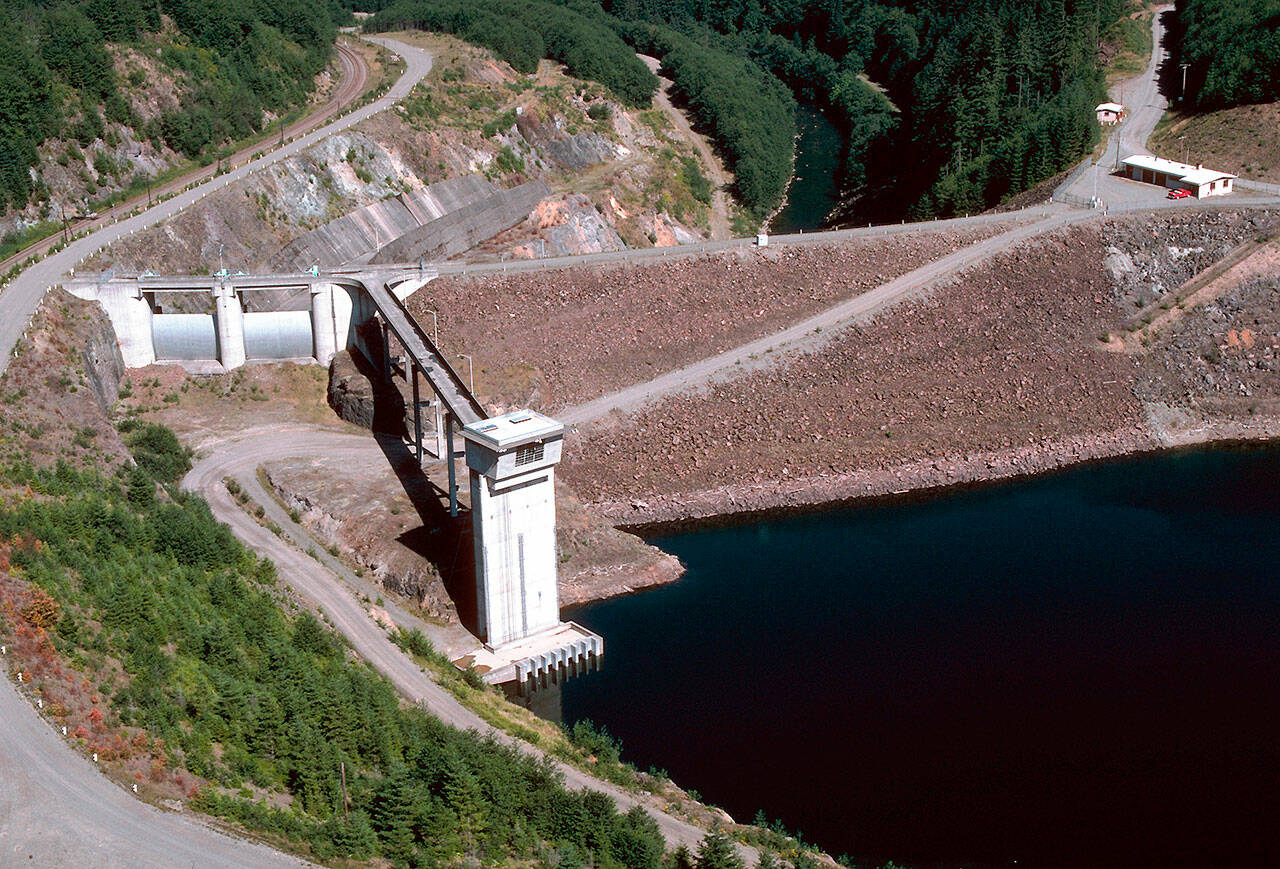Although it’s taken more than two decades longer than expected, the federal funding appears to finally be coming to build an estimated $855 million fish passage facility at the Howard Hanson Dam along the Green River.
“We anticipate construction starting by 2026,” said Andrew Munoz, chief of public affairs for the Seattle District of the U.S. Army Corps of Engineers, in an Aug. 2 email. “This project is a win for Puget Sound salmon restoration, Tacoma Public Utilities water service customers (which includes the city of Kent), and downstream communities (Auburn, Kent, Tukwila, Renton) flood risk mitigation.”
The facility is expected to be completed by 2030. The dam is about 25 miles east of Kent.
The Corps received $220 million as part of the part of the $1.2 trillion infrastructure bill approved by Congress and signed by President Joe Biden in 2021.
The U.S. Senate last month approved by a vote of 93-1 the Water Resources Development Act (WRDA). That bill includes funds for the Hanson Dam fish passage facility. The Senate will now work with the House of Representatives to move a bicameral bill forward to be considered by the House and Senate, according to a July 28 press release from Washington Democratic Sens. Patty Murray and Maria Cantwell.
“This funding will open more than 100 miles of salmon habitat by constructing fish passage at Howard Hanson Dam,” Cantwell said.
Munoz provided key points of what the project will accomplish:
• Restores the biological connection of the upper watershed (45% of total area) to the lower watershed via salmon migration
• Substantially increases salmon and steelhead productivity by providing over 100 miles of high-quality river and tributary habitat
• Increases ability of Endangered Species Act (ESA)-listed Chinook salmon to access substantially more spawning and rearing area – 221 square miles of undeveloped watershed
• Provides access for coho salmon and ESA-listed steelhead to the 90% of their habitat area that was disconnected by the dam
• Expected to increase population of Chinook salmon, the primary food source for ESA-listed Southern Resident Killer Whales
• Restores ecosystem functions and values to a protected watershed; restoring salmon populations will provide for bears, eagles, osprey, river otters and dozens of other species.
The Green River Valley communities of Auburn, Kent, Tukwila and Renton depend on Hanson Dam to protect their lives, their jobs and an estimated $21.5 billion in property, Munoz said.
“With the fish passage, the dam can continue to serve its purpose as a crucial flood control dam, but in a more environmentally sustainable way,” Munoz said.
The federal government built the rock-and earth-fill Hanson dam in 1961 to control major flooding in the Green River Valley. Water is stored at behind the dam in the Eagle Gorge Reservoir.
Tacoma Water manages the Green River watershed and uses the river as the primary water supply for the city of Tacoma. Tacoma Water also supplies water to the city of Kent, the Covington Water District and the Lakehaven Water District in Federal Way. Kent’s primary water source is the Clark Springs watershed in Ravensdale along the Cedar River.
Munoz said the dam’s current functions include:
• 104,000 acre feet of flood storage from November to February
• 5,000 acre feet for ecosystem restoration
• 20,000 acre feet of municipal water storage
• 24,000 acre feet for fish conservation (by preventing the river from running dry during drought years).
The Corps initially started to look at building a fish-passage tower in the late 1990s to be completed by 2007, according to a previous Kent Reporter article. But bids came in higher than the government estimated and were not awarded. Dollars also became tight because the Corps spent so much money on recovery efforts after Hurricane Katrina struck the Gulf Coast in 2005.
The Corps looked again in 2009 at building a fish passage facility with an estimated cost of $220 million. But that project never received funding and in 2011 was suspended because it exceeded costs, according to the Corps.
In 2019, the National Marine Fisheries Service issued a biological opinion that required an operational downstream fish passage facility by 2030.
The state Department of Fish and Wildlife agreed with the findings.
“Habitat loss and fish passage barriers (big and small) are key factors impeding salmon recovery in Puget Sound and across the Pacific Northwest,” according to a letter of support in favor of the fish passage facility from the state Department of Fish and Wildlife. “Howard A. Hanson Dam currently prevents fish from accessing critical spawning and rearing habitat in the upper Green River.”
The state Department of Fish and Wildlife also stated in that letter that “completing the Howard Hanson fish passage represents an opportunity for the largest single gain in potential salmon production in Puget Sound.”
Talk to us
Please share your story tips by emailing editor@kentreporter.com.
To share your opinion for publication, submit a letter through our website https://www.kentreporter.com/submit-letter/. Include your name, address and daytime phone number. (We’ll only publish your name and hometown.) Please keep letters to 300 words or less.

